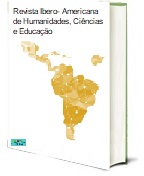MUSCLE HYPERTROPHY IN ECTOMORPHIC ADULT MEN
DOI:
https://doi.org/10.51891/rease.v8i11.7840Keywords:
Hypertrophy. muscular. Ectomorph.Abstract
The somatotypological representation of a person can conceive expressively positive gains in the practice of a certain modality and not differently in strength training. Muscle hypertrophy represents an increase in muscle cross-sectional area in return to repeated strength training sessions. Multiple studies recommend that this adequacy be interceded by mechanical incitements associated with hormonal and metabolic incitements resulting from the repeated execution of a certain training load. There are a wide variety of types of training aimed at developing muscle hypertrophy. This research aims to understand how the handling of strength resistance training variables can maximize hypertrophy and understand which methodologies are the most suitable for the ectomorph, because only then is it possible to guide training and food routines. Thus, it is of great value to be aware of the influence of constant training and nutrition, thus helping Physical Education professionals in determining programs that are more effective for the ectomorph adult male. This research is characterized as bibliographical, of qualitative character. It can be concluded that training assiduity may be favorable, as the maximum stimulus maintains high protein synthesis rates, optimizing muscle hypertrophy in ectomorph adult men.
Downloads
Downloads
Published
How to Cite
Issue
Section
Categories
License
Atribuição CC BY

